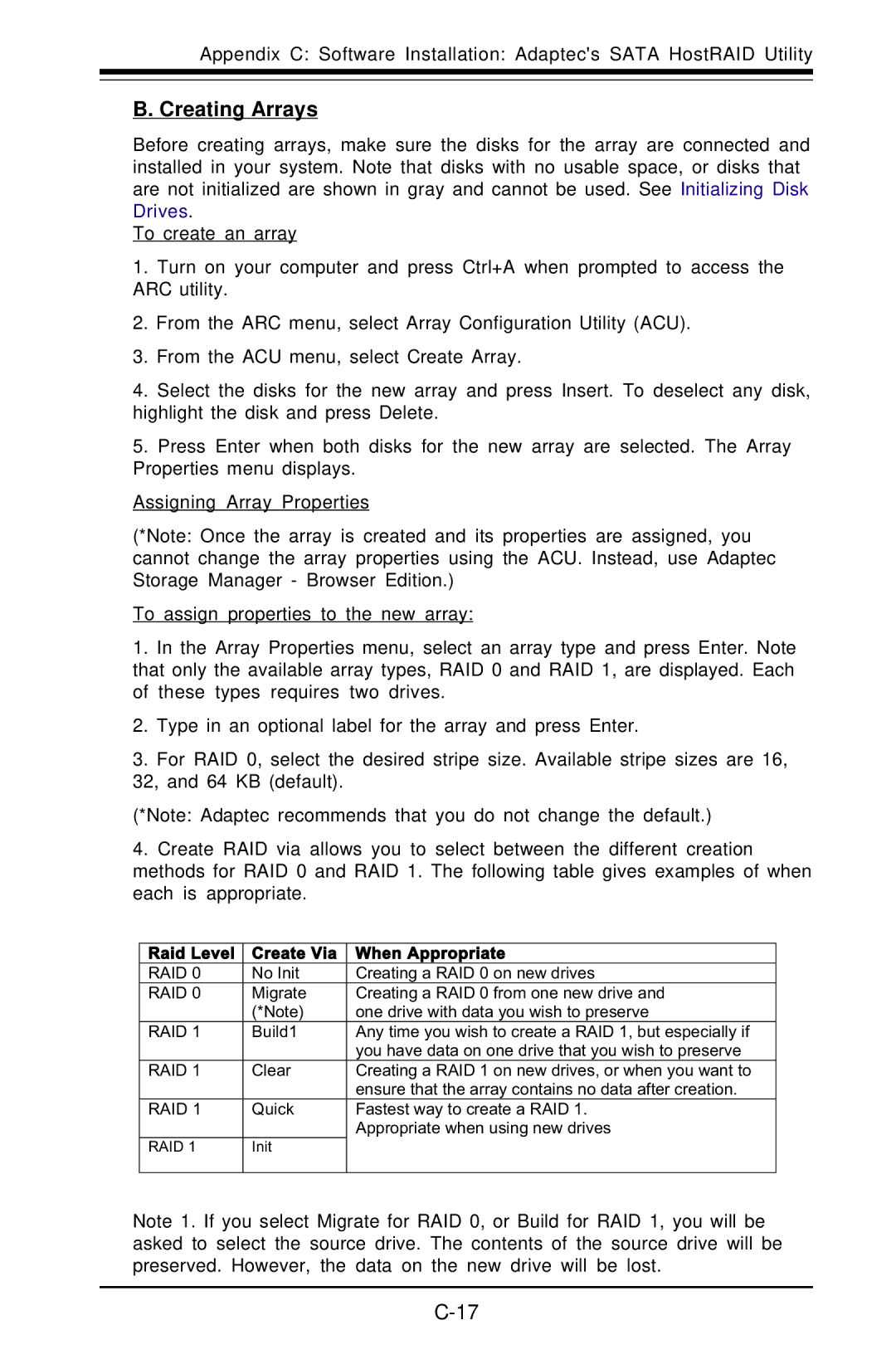
Appendix C: Software Installation: Adaptec's SATA HostRAID Utility
B. Creating Arrays
Before creating arrays, make sure the disks for the array are connected and installed in your system. Note that disks with no usable space, or disks that are not initialized are shown in gray and cannot be used. See Initializing Disk Drives.
To create an array
1.Turn on your computer and press Ctrl+A when prompted to access the ARC utility.
2.From the ARC menu, select Array Configuration Utility (ACU).
3.From the ACU menu, select Create Array.
4.Select the disks for the new array and press Insert. To deselect any disk, highlight the disk and press Delete.
5.Press Enter when both disks for the new array are selected. The Array Properties menu displays.
Assigning Array Properties
(*Note: Once the array is created and its properties are assigned, you cannot change the array properties using the ACU. Instead, use Adaptec Storage Manager - Browser Edition.)
To assign properties to the new array:
1.In the Array Properties menu, select an array type and press Enter. Note that only the available array types, RAID 0 and RAID 1, are displayed. Each of these types requires two drives.
2.Type in an optional label for the array and press Enter.
3.For RAID 0, select the desired stripe size. Available stripe sizes are 16, 32, and 64 KB (default).
(*Note: Adaptec recommends that you do not change the default.)
4.Create RAID via allows you to select between the different creation methods for RAID 0 and RAID 1. The following table gives examples of when each is appropriate.
Raid Level | Create Via | When Appropriate |
RAID 0 | No Init | Creating a RAID 0 on new drives |
RAID 0 | Migrate | Creating a RAID 0 from one new drive and |
| (*Note) | one drive with data you wish to preserve |
RAID 1 | Build1 | Any time you wish to create a RAID 1, but especially if |
|
| you have data on one drive that you wish to preserve |
RAID 1 | Clear | Creating a RAID 1 on new drives, or when you want to |
|
| ensure that the array contains no data after creation. |
RAID 1 | Quick | Fastest way to create a RAID 1. |
|
| Appropriate when using new drives |
RAID 1 | Init |
|
|
|
|
Note 1. If you select Migrate for RAID 0, or Build for RAID 1, you will be asked to select the source drive. The contents of the source drive will be preserved. However, the data on the new drive will be lost.
